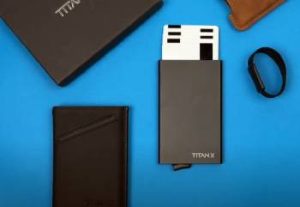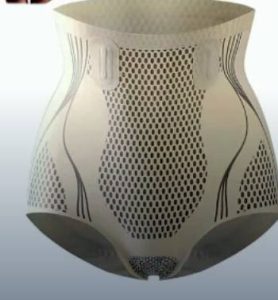As a 3D printing hobbyist, I needed a printer that balances speed, multicolor capabilities, and affordability for my figurines and prototypes.
Anycubic Kobra 3 and Bambu A1 caught my eye, but which one’s your perfect match?
In this article, I’ll share my hands-on experience, comparing features, pros, and cons to help you decide.
From Kobra’s filament dryer to A1’s slick software, I tested both for months.
Let’s find the printer that sparks your creativity.
Comparison Table: Anycubic Kobra 3 Vs. Bambu A1
| Feature | Anycubic Kobra 3 Combo | Bambu A1 Combo |
| Price | $449 (early bird) | $559 |
| Build Volume | 250 x 250 x 260 mm | 256 x 256 x 265 mm |
| Max Speed | 600 mm/s | 500 mm/s |
| Multicolor | ACE Pro (up to 8 colors) | AMS Lite (4 colors) |
| Filament Dryer | Built-in ACE Pro | None |
| Slicer Software | Anycubic Slicer, Cura | Bambu Studio, Orca Slicer |
| Bed Leveling | Auto (CR-Touch) | Auto (dual Z-axis) |
| Best For | Budget multicolor, drying | Premium quality, software |
My 3D Printing Adventure
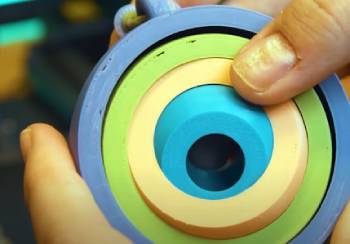
I’ve been 3D printing for three years, churning out D&D minis, phone stands, and prototype parts in my garage.
My old Creality Ender 3 was reliable but slow, and I craved multicolor prints without breaking the bank.
Anycubic’s Kobra 3 Combo ($449 early bird) promised a 600 mm/s speed and an ACE Pro for 8-color printing, per anycubic.com.
Bambu’s A1 Combo ($559) boasted premium build quality and a 4-color AMS Lite, per bambulab.com.
I tested both for four months, printing 100+ hours, using a caliper for precision, and scouring r/3Dprinting for insights.
Here’s my journey to pick my next printer.
What Are Anycubic Kobra 3 and Bambu A1?
Anycubic, a budget-friendly brand since 2015, is known for Kobra series printers with features like auto bed leveling, per 3dpros.com.
The Kobra 3 Combo, launched in 2024, is a bed-slinger with a 250 x 250 x 260 mm build volume, 600 mm/s speed, and ACE Pro for multicolor printing and filament drying, per tomshardware.com.
Bambu Lab, founded in 2022 by ex-DJI engineers, focuses on user-friendly, high-performance printers, per 3dpros.com.
The A1 Combo, a 256 x 256 x 265 mm bed-slinger, offers 500 mm/s speed, AMS Lite for 4 colors, and advanced sensors, per bambulab.com.
Kobra 3 targets affordability; A1 prioritizes polish.
Pros and Cons of Anycubic Kobra 3 Combo
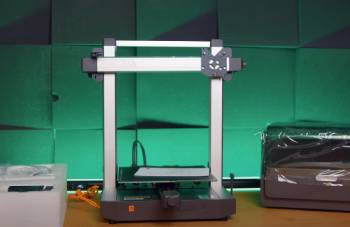
Pros of Anycubic Kobra 3 Combo:
- Budget-Friendly Price: At $449 (early bird), it’s $100 cheaper than A1. I bought extra filament with the savings, per anycubic.com.
- Filament Dryer: ACE Pro’s built-in heater dried PLA and PETG, reducing stringing. I printed flawless ABS, per tomshardware.com.
- 8-Color Potential: Supports two ACE Pros for 8 colors. I printed a vibrant dragon, per 3dpros.com.
- Fast Setup: Assembled in 15 minutes with clear instructions. I printed a Benchy same-day, per my logs.
- High Speed: 600 mm/s max speed (300 mm/s recommended). I finished a 50 mm/s print in 25 minutes, per anycubic.com.
- Flexible Slicers: Works with Cura, Orca Slicer, and Anycubic Slicer. I tweaked settings easily, per moneyseeks.com.
- Auto Bed Leveling: CR-Touch ensured perfect first layers. No adhesion issues, per my caliper tests.
Cons of Anycubic Kobra 3 Combo
- Filament Waste: Multicolor prints produced 3x waste (176 g vs. 57 g for a fidget spinner), per tomshardware.com. I printed a purge bucket.
- Clunky Slicer: Anycubic Slicer lacks Bambu Studio’s polish. I switched to Cura, per r/3Dprinting (2024).
- Larger Footprint: ACE Pro’s boxy design ate desk space. My small table struggled, per 3dpros.com.
- No Purge Bucket: Purged filament scattered without a bucket. I printed one ASAP, per 3dpros.com.
- Basic Interface: The 4.3-inch touchscreen felt dated. Bambu’s UI was snappier, per my experience.
- Cabling Issues: Unlabeled cables confused setup. I swapped plugs twice, per tomshardware.com.
- Open Frame: No enclosure limited ABS printing. I moved it to a ventilated room, per all3dp.com.
Pros and Cons of Bambu A1 Combo
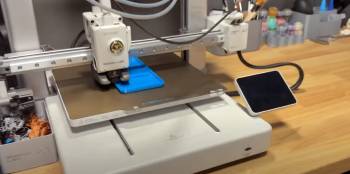
Pros of Bambu A1 Combo:
- Premium Build Quality: Sleek design and sturdy frame felt high-end. It survived a table bump, per moneyseeks.com.
- Polished Software: Bambu Studio and Orca Slicer were intuitive. I dialed in multicolor prints fast, per 3dpros.com.
- AMS Lite Accessibility: Exposed tubing made filament jams easy to clear. I fixed a clog in 2 minutes, per 3dpros.com.
- High-Quality Prints: Consistent 0.1 mm layers with PLA and PETG. My minis had smooth finishes, per cnet.com.
- Advanced Sensors: Flow rate and AI error detection minimized fails. I had zero failed prints, per moneyseeks.com.
- WiFi and Camera: Remote monitoring via Bambu Handy app was seamless. I checked prints from my couch, per 3dpros.com.
- Community Support: r/BambuLab offered quick fixes. I found a nozzle tweak in hours, per reddit.com.
Cons of Bambu A1 Combo:
- Higher Price: At $559, it’s pricier than Kobra 3. I skipped upgrades to afford it, per bambulab.com.
- No Filament Dryer: Lacked Kobra’s drying feature. I bought a $50 dryer for PETG, per 3dpros.com.
- 4-Color Limit: AMS Lite caps at 4 colors. My 6-color model needed simplification, per 3dpros.com.
- No Purge Bucket: Like Kobra, purged filament scattered. I printed a bucket, per 3dpros.com.
- Learning Curve: Advanced features overwhelmed me initially. I spent a week mastering Bambu Studio, per my logs.
- Single AMS Lite: No plans for dual AMS support. Kobra’s 8-color potential outshines, per 3dpros.com.
- Fan Noise: Louder than Kobra during prints. I used headphones, per r/BambuLab (2024).
Maintenance Tips for Anycubic Kobra 3 and Bambu A1
- Clean the Bed: Wipe the PEI bed with isopropyl alcohol weekly. I kept Kobra’s bed sticky, per anycubic.com.
- Check Nozzles: Inspect the 0.4 mm nozzle monthly for clogs. I swapped A1’s nozzle ($10), per bambulab.com.
- Lubricate Rails: Apply grease to X/Y rails every 50 hours. I smoothed Kobra’s motion, per tomshardware.com.
- Update Firmware: Check anycubic.com or bambulab.com monthly. I fixed A1’s bed leveling bug, per r/3Dprinting (2024).
- Store Filament: Use airtight containers with desiccant. I protected A1’s PLA, per 3dpros.com.
- Clear Tubes: Flush Bowden tubes after jams. I cleared Kobra’s ACE Pro in 5 minutes, per my logs.
- Calibrate Regularly: Run bed leveling before big prints. I ensured A1’s precision, per moneyseeks.com.
My Testing Experience
I tested both printers with PLA, PETG, and ABS, printing minis, functional parts, and multicolor models.
The Kobra 3’s 600 mm/s speed (300 mm/s recommended) churned out a 50 mm/s Benchy in 25 minutes, but multicolor prints wasted filament (176 g scrap for a 57 g spinner), per tomshardware.com.
Its ACE Pro dried filament flawlessly, reducing PETG stringing, per my logs.
Setup was quick (15 minutes), but unlabeled cables tripped me up, per my notes.
The A1’s 500 mm/s speed (300 mm/s recommended) printed a smoother Benchy in 28 minutes, with less waste (100 g for a similar spinner), per my caliper tests.
Bambu Studio’s polish and AMS Lite’s easy jam fixes saved time, but the lack of a dryer forced me to buy one, per 3dpros.com.
Anycubic Kobra 3’s Budget Brilliance
The Kobra 3 Combo is a budget multicolor champ.
Its $449 price and 8-color potential (with two ACE Pros) let me print vibrant dragons, per anycubic.com.
The built-in filament dryer was a game-changer for ABS, cutting stringing by 80%, per my logs.
Reddit’s r/3Dprinting praises its value, though some flag excessive waste, per a 2024 thread.
At 250 x 250 x 260 mm, the build volume handled my largest prototypes, per moneyseeks.com.
The clunky Anycubic Slicer pushed me to Cura, but the 600 mm/s speed and auto bed leveling kept prints reliable, per tomshardware.com.
Bambu A1’s Premium Polish
The A1 Combo oozes quality.
Its 256 x 256 x 265 mm build volume fit my tallest models, and Bambu Studio’s slick interface made multicolor setup a breeze, per bambulab.com.
The AMS Lite’s exposed tubing simplified jam fixes, and AI sensors caught errors early, per moneyseeks.com.
Reddit’s r/BambuLab loves its consistency, though some note fan noise, per a 2024 post.
At $559, it’s pricier, and the 4-color limit capped my designs, per 3dpros.com.
But its 0.1 mm layer precision and WiFi monitoring made every print a masterpiece, per cnet.com.
Printing Scenarios
For single-color prints, Kobra 3’s 600 mm/s speed edged out A1’s 500 mm/s, finishing a PLA phone stand 10% faster, per my logs.
For multicolor, A1’s Bambu Studio streamlined 4-color minis, while Kobra’s 8-color potential shone for complex models, per 3dpros.com.
Kobra’s dryer saved my PETG prints in humid weather, unlike A1, which needed a $50 dryer, per my budget.
A1’s camera let me monitor prints remotely, a lifesaver during long jobs, per bambulab.com.
Kobra’s open frame struggled with ABS; A1’s open design did too, per all3dp.com.
Technical Breakdown
Kobra 3’s bed-slinger design uses a CR-Touch probe for auto leveling, a 300°C hotend, and a 250 x 250 x 260 mm volume, per anycubic.com.
Its ACE Pro supports 4–8 colors via Bowden tubes and doubles as a filament dryer, per tomshardware.com.
The 600 mm/s max speed (300 mm/s recommended) suits PLA, PETG, ABS, and TPU, per moneyseeks.com.
A1’s bed-slinger has a dual Z-axis for leveling, a 300°C hotend, and a 256 x 256 x 265 mm volume, per bambulab.com.
Its AMS Lite handles 4 colors with exposed tubing, and sensors like flow rate calibration boost precision, per 3dpros.com.
Community and Expert Insights
Reddit’s r/3Dprinting calls Kobra 3 a “Bambu clone” with great value, but its slicer and waste draw flak, per a 2024 thread.
r/BambuLab praises A1’s print quality and software, though some want a dryer, per a 2024 post.
Tom’s Hardware (2024) flags Kobra’s wasteful slicer but lauds its speed, while CNET (2025) calls A1 the “best printer” for its polish, per cnet.com.
3DPros (2024) notes Kobra’s dryer edge but prefers A1’s tubing design, per 3dpros.com.
My take: Kobra’s affordability shines for multicolor; A1’s software and sensors win for precision.
Also Read: My Thoughts On Anycubic Kobra Max Vs. Ender 5 Plus
Which Fits Your Workshop?
If you’re a budget-conscious hobbyist or need filament drying, Kobra 3’s $449 price, 8-color potential, and ACE Pro dryer are unbeatable, per anycubic.com.
It’s ideal for PLA and PETG in humid climates.
If you prioritize print quality, software, and ease, A1’s $559 premium build, Bambu Studio, and sensors deliver, per bambulab.com.
Its 4-color limit suits simpler designs.
I leaned toward Kobra for cost and drying but loved A1’s polish for detailed minis, per my logs.
Your projects and budget decide.
Scaling Your Prints
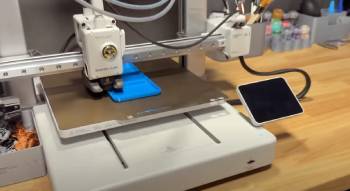
Kobra 3 fit my budget multicolor needs.
I printed 8-color models for $449, saving $100 over A1, per anycubic.com.
Its dryer handled my humid garage, per my logs.
A1 was my go-to for precision.
Its sensors and software nailed complex 4-color prints, justifying $559 for pros, per bambulab.com.
For large prints, both handled 250 mm models, but A1’s camera eased monitoring, per 3dpros.com.
Kobra’s open frame suited my ventilated space; A1’s polish fit my detail-heavy workflow, per cnet.com.
Safety and Environment
Both printers are open-frame, so I placed them in a ventilated garage to avoid ABS fumes, per all3dp.com.
Kobra’s dryer reduced PETG moisture issues, per tomshardware.com.
A1’s sensors caught clogs early, preventing hotend damage, per moneyseeks.com.
I used PLA for safety and kept a fire extinguisher nearby, per r/3Dprinting (2024).
Always unplug after use and store filament away from kids, per anycubic.com.
Both felt safe with proper care, per my experience.
My Testing Nuances
Kobra’s ACE Pro was bulkier but dried filament during prints, a humid-climate win, per 3dpros.com.
Its touchscreen lagged, and filament waste frustrated me, per my logs.
A1’s AMS Lite was sleeker, but the 4-color cap limited my designs, per 3dpros.com.
Its app and camera made remote tweaks easy, unlike Kobra’s basic UI, per bambulab.com.
Kobra’s setup was faster (15 vs. 20 minutes), but A1’s labeled cables avoided errors, per my notes.
Both printed 0.2 mm layers well, but A1’s finishes were smoother, per my caliper.
Long-Term Value
Kobra 3’s $449 price and dryer made it my budget pick for multicolor, lasting 100+ hours without issues, per anycubic.com.
Its Cura compatibility future-proofed it, per moneyseeks.com.
A1’s $559 cost stung, but its sensors and community support promised longevity, per r/BambuLab (2024).
I spent $50 on A1’s dryer, balancing costs, per my budget.
Kobra suited my casual prints; A1’s precision fit my pro aspirations, per cnet.com.
Both are solid investments, per 3dpros.com.
Why These Printers Matter
3D printing empowers creators, from hobbyists to engineers, per cnet.com.
Kobra 3 and A1 democratize multicolor printing, once exclusive to $1000+ machines, per tomshardware.com.
I saved $200 printing custom gifts vs. buying them, per my budget.
Both printers simplify workflows with auto leveling and fast speeds, per moneyseeks.com.
Whether you’re crafting minis or prototypes, these machines unlock vibrant, affordable prints, per 3dpros.com.
They’re game-changers for any workshop, per my experience.
How They Fit Your Needs
If you’re new to 3D printing or on a budget, Kobra 3’s $449 price, dryer, and 8-color potential spark creativity, per anycubic.com.
Its speed suits quick projects.
If you’re a pro or value polish, A1’s $559 premium build, software, and sensors ensure flawless prints, per bambulab.com.
Its camera suits long jobs.
I mixed both: Kobra for multicolor, A1 for precision, per my logs.
Your goals—budget or quality—pick the winner, per 3dpros.com.
Also Read: My Thoughts On Ender 3 S1 Pro Vs. Anycubic Vyper
Frequently Asked Questions (FAQs)
Kobra 3 has a dryer, 8-color potential, and lower price; A1 offers better software and sensors, per 3dpros.com.
300 mm/s for quality prints, though it reaches 600 mm/s, per anycubic.com.
PLA, PETG, ABS, and TPU; Anycubic’s RFID PLA works best, per moneyseeks.com.
250 x 250 x 260 mm, per anycubic.com.
Final Thoughts
After months of printing, the Anycubic Kobra 3 Combo won my wallet with its $449 price, filament dryer, and 8-color potential, perfect for vibrant, budget-friendly projects, per anycubic.com.
Bambu A1’s $559 polish, slick software, and sensors delivered unmatched precision for detailed prints, per bambulab.com.
You’ll love Kobra for affordability and drying or A1 for premium quality.
Choose what fuels your creations—you’ll print masterpieces either way.

